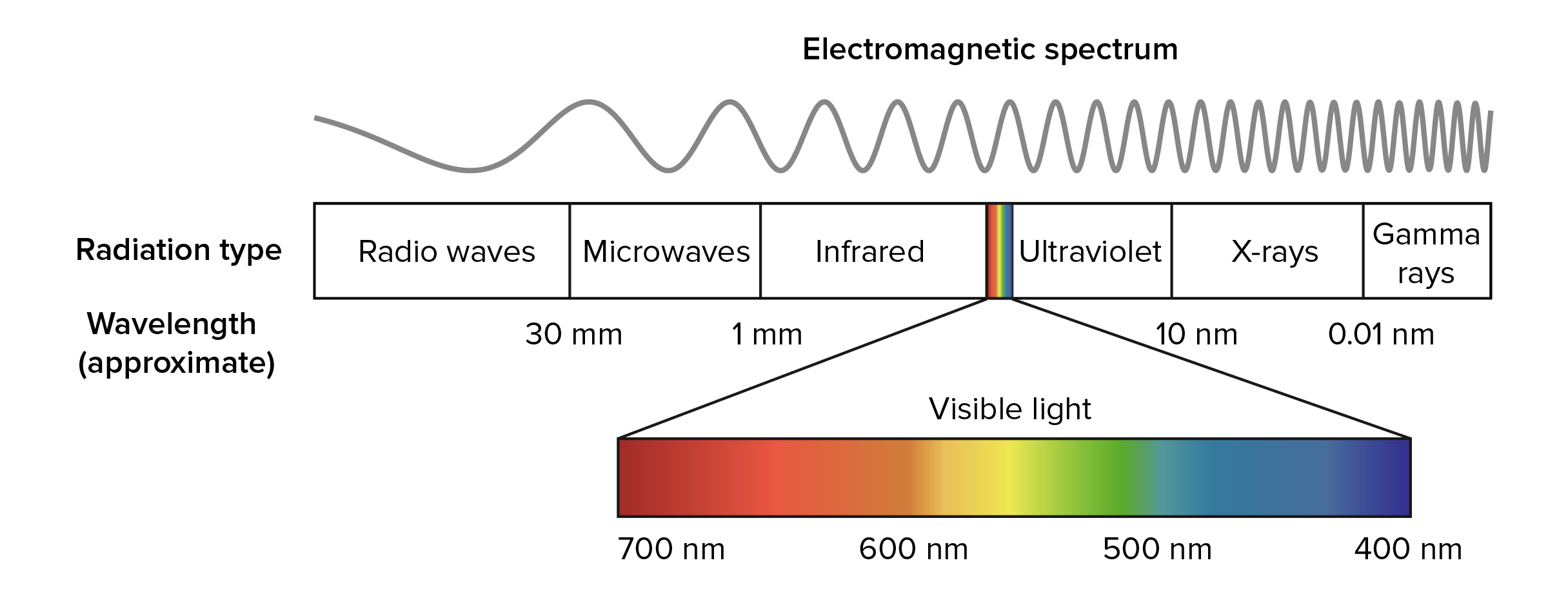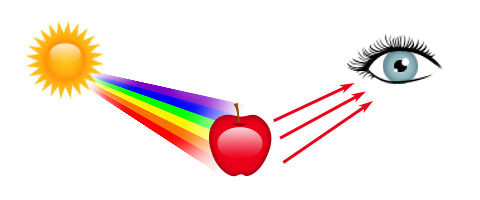Question #e7dfe
1 Answer
Light has different wavelengths that get absorbed and reflected off of an object it comes into contact with. The reflected light is the colour we see.
Explanation:
This question is more related to how we see colour so I will answer that.
Light has different wavelengths. This is due to light's properties when its frequency changes. This is evident in the equation:
=>
=>
=>

In the human eye, we have 2 types of photoreceptors known as cones and rods. We have 3 kinds of cones, and 1 kind of rod.
Cones
The cones pick up the light that is reflected off of an object. This is only helpful in high levels of light.
When light comes into contact with an object, all wavelengths of light is absorbed, however some are reflected. This reflected wavelength of light becomes a visible colour to us. The specific light reflected is dependent on the object's property.
For example, a red apple. All colors but red (and its shades and hues) are absorbed, while red light is reflected into our eyes.

The number of the different types of cones an eye has determines the range of visible light that can be processed by the brain. Humans have cones of red, green, and blue.
With that said, some animals can "see more colour" by having more types of cones. These include certain butterflies, mantis shrimps, and much more.
Rods
While cones are responsible for picking up visible light in high levels of light, rods are responsible for picking up light in low levels of light.
Because humans only have 1 kind of rod, we can only see in one colour (and its shades and hues) - black/grey/white.
This is why we don't see much colour in the dark. We know an object is a certain colour, but light cannot be reflected into our eyes, thus we rely on rods rather than cones. Until higher levels of light is given, we can only see a small range of colours.
Hope this helps :)
P.S. this does not go in the chemistry section. Maybe anatomy or biology.

